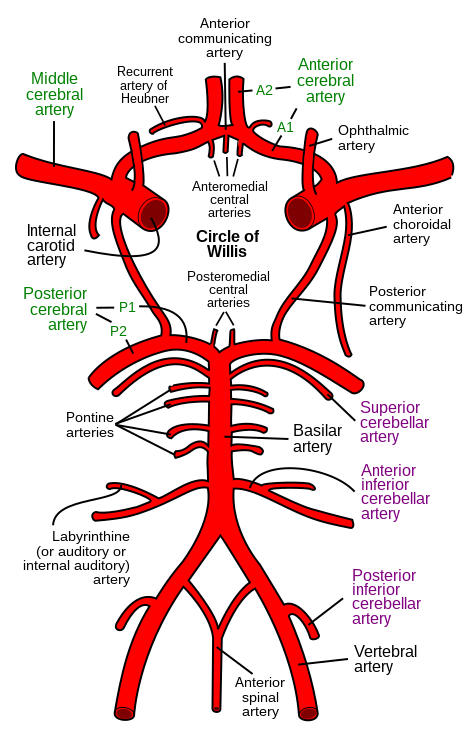Doing a lecture on cognitive tests in front of medicals students is rather amusing. Everyone is trying to prove how smart they are. We know. You're smart. We all are. We're in med school. That didn't stop everyone (embarrassingly, myself included) from trying to repeat back 9 random digits or reorder a collection of letters and numbers. I guess it should comfort you that your future doctors are in fact above average at simple memory tests.
Quote of the Day: "If you can transplant it, it's probably not that important. " ~Neurosurgeon
TIL: The penumbra is the area around an ischemic stroke that has lost blood flow and become hypoxic but hasn't died. If the stroke is treated quickly, this tissue can still be saved. If you happen to be an astronomy buff, you will recognize the word penumbra from eclipses. For example, the umbra (shadow in Latin) is the area where the moon casts its shadow on the earth during a full lunar eclipse, completely blocking out the sun. The penumbra is the area where the moon is only blocking part of the sun, or a partial eclipse. Penumbra in neurology comes from the same root because it shows up as a "shadow" on x-ray film.
A useful way of remembering what shows up as white on a head CT (at least in urban areas): bone, blood, and bullets.
 The Circle of Willis is a ring of anastamoses in the brain consisting of the anterior cerebral arteries, anterior communicating artery, internal carotid arteries, posterior cerebral arteries, posterior communicating arteries, but usually not (depending on the source) the basilar artery and middle cerebral arteries. It's all rather confusing because the loop of communicating arteries is fed by other arteries that you may or may not consider part of the circle itself.
The Circle of Willis is a ring of anastamoses in the brain consisting of the anterior cerebral arteries, anterior communicating artery, internal carotid arteries, posterior cerebral arteries, posterior communicating arteries, but usually not (depending on the source) the basilar artery and middle cerebral arteries. It's all rather confusing because the loop of communicating arteries is fed by other arteries that you may or may not consider part of the circle itself.
 The Circle of Willis is a ring of anastamoses in the brain consisting of the anterior cerebral arteries, anterior communicating artery, internal carotid arteries, posterior cerebral arteries, posterior communicating arteries, but usually not (depending on the source) the basilar artery and middle cerebral arteries. It's all rather confusing because the loop of communicating arteries is fed by other arteries that you may or may not consider part of the circle itself.
The Circle of Willis is a ring of anastamoses in the brain consisting of the anterior cerebral arteries, anterior communicating artery, internal carotid arteries, posterior cerebral arteries, posterior communicating arteries, but usually not (depending on the source) the basilar artery and middle cerebral arteries. It's all rather confusing because the loop of communicating arteries is fed by other arteries that you may or may not consider part of the circle itself.


No comments:
Post a Comment